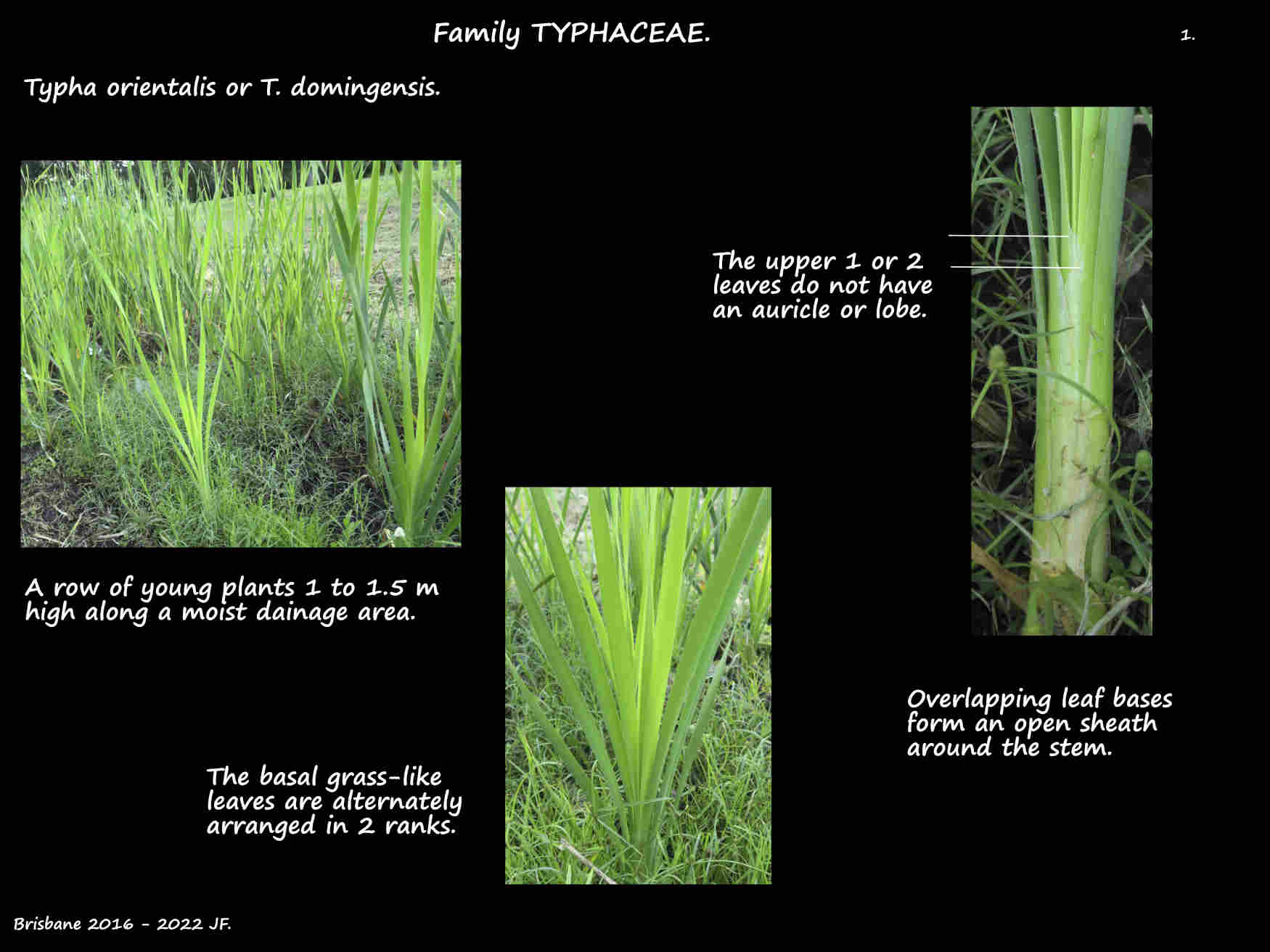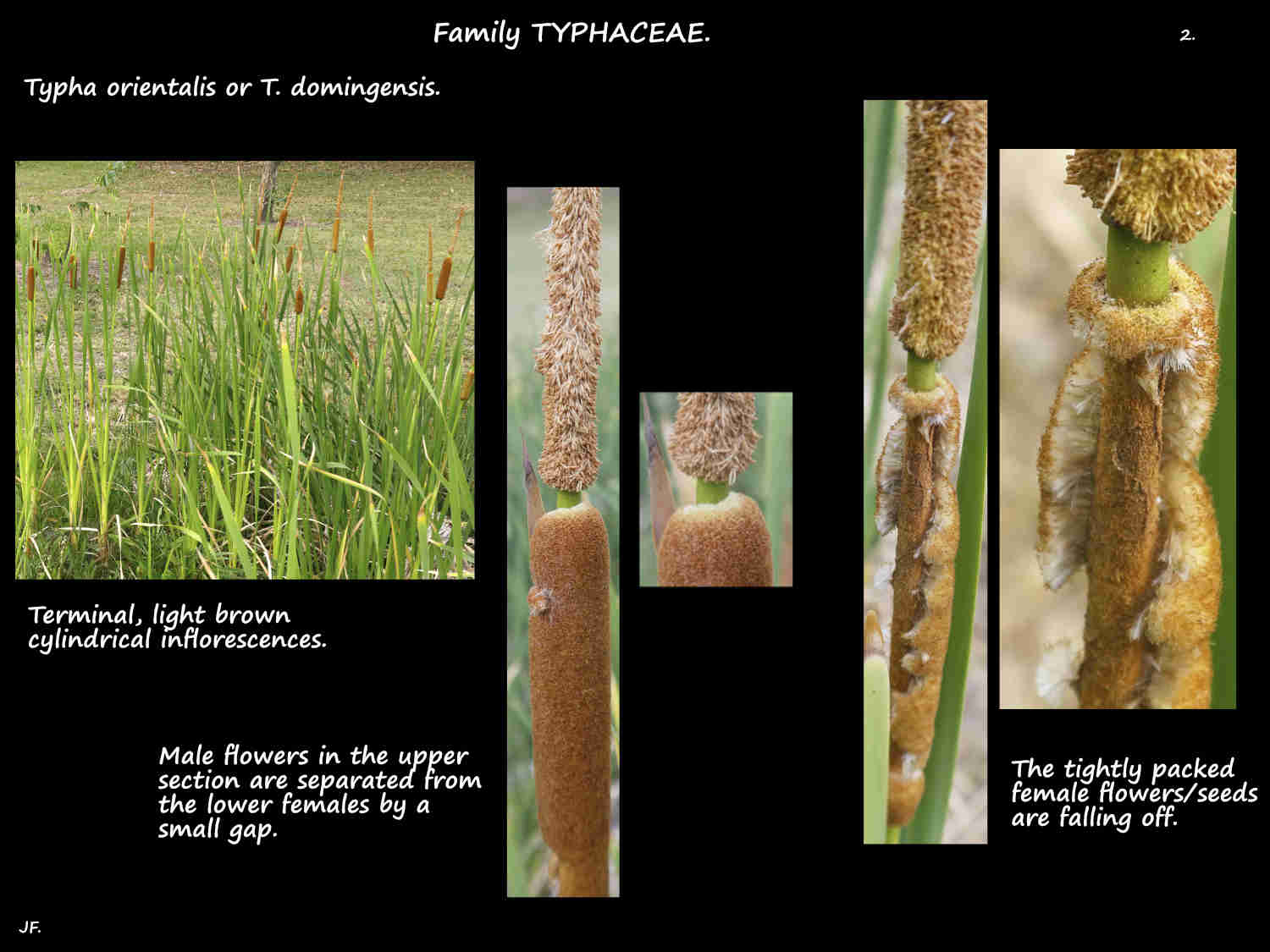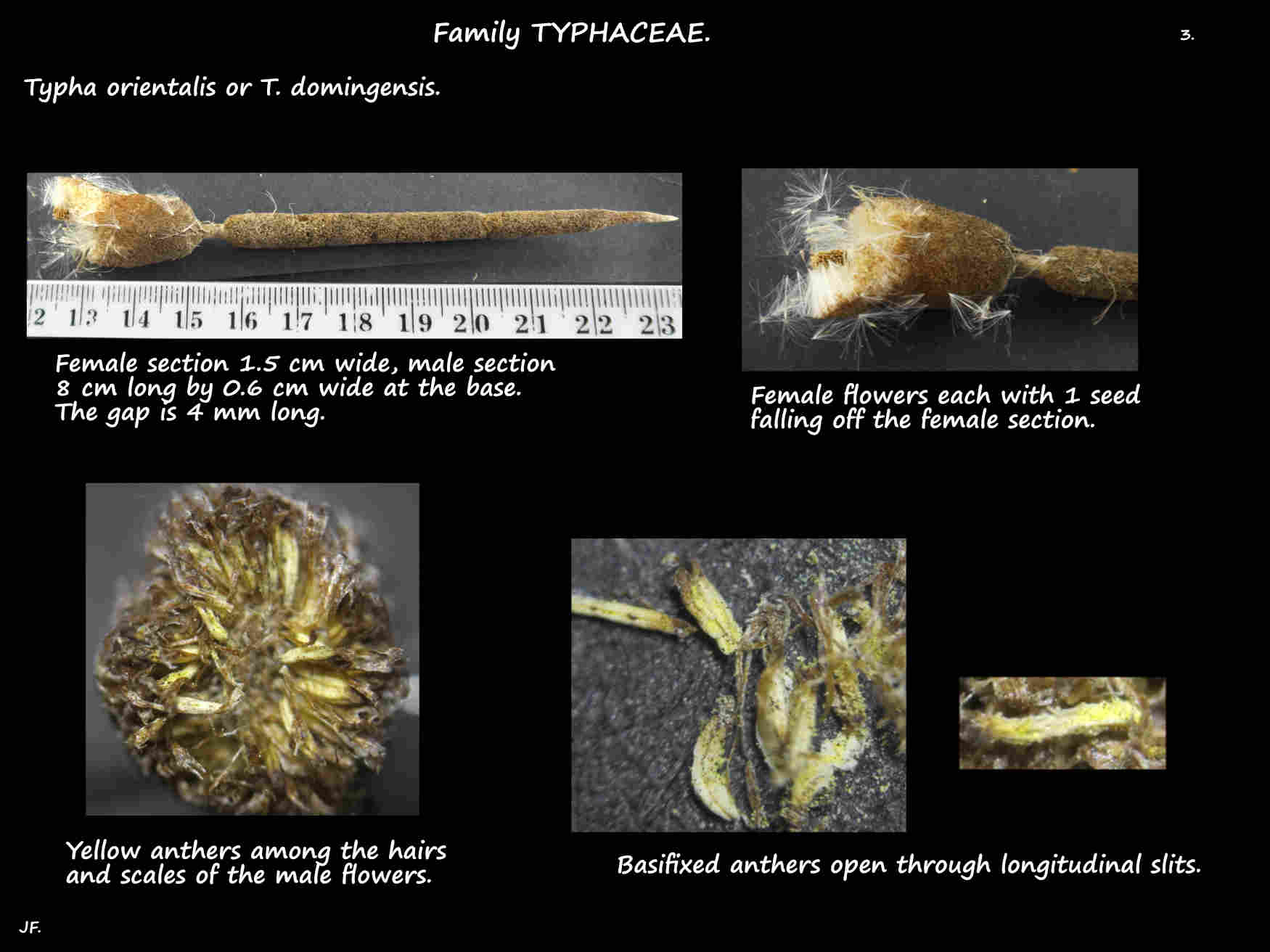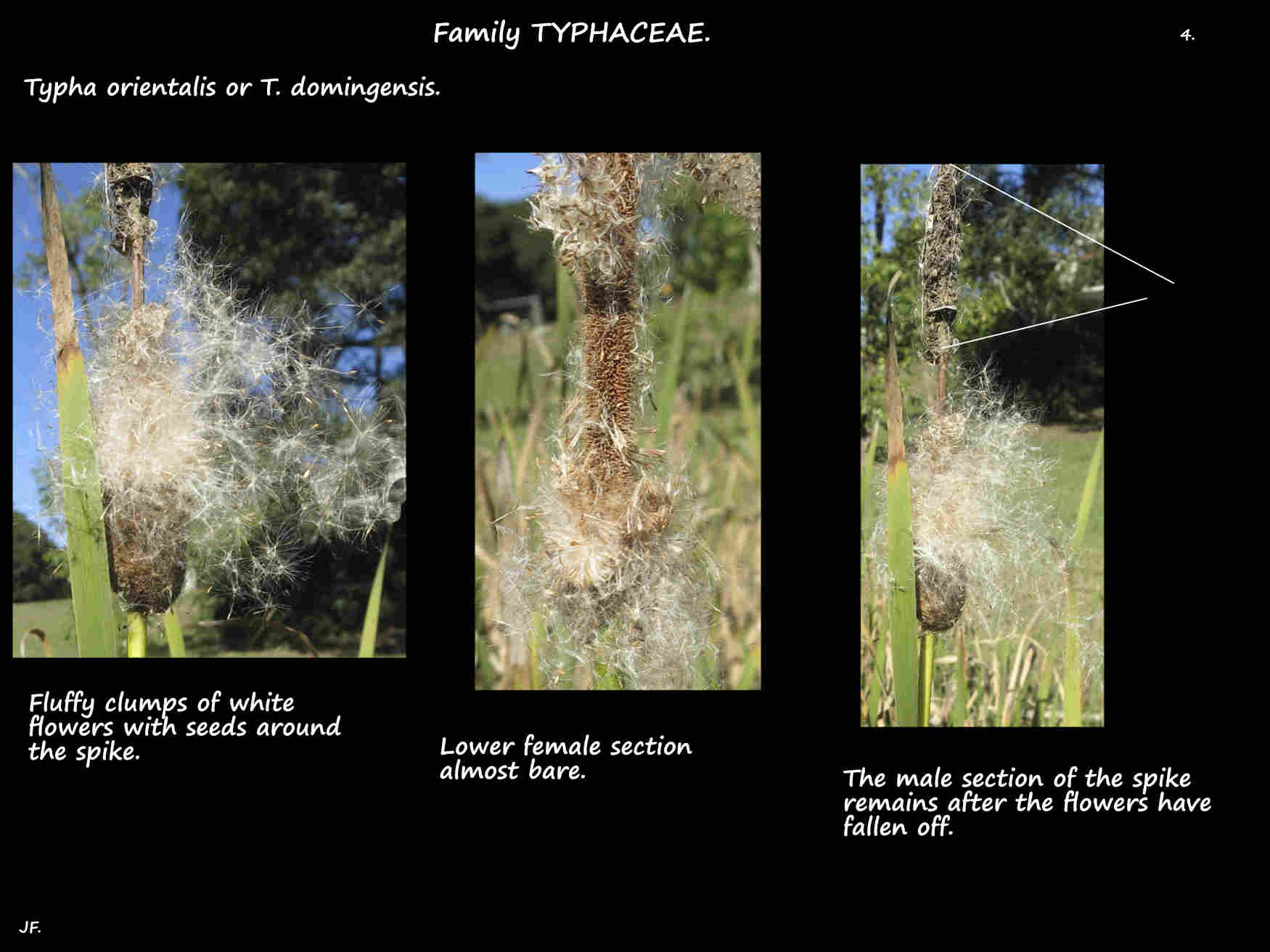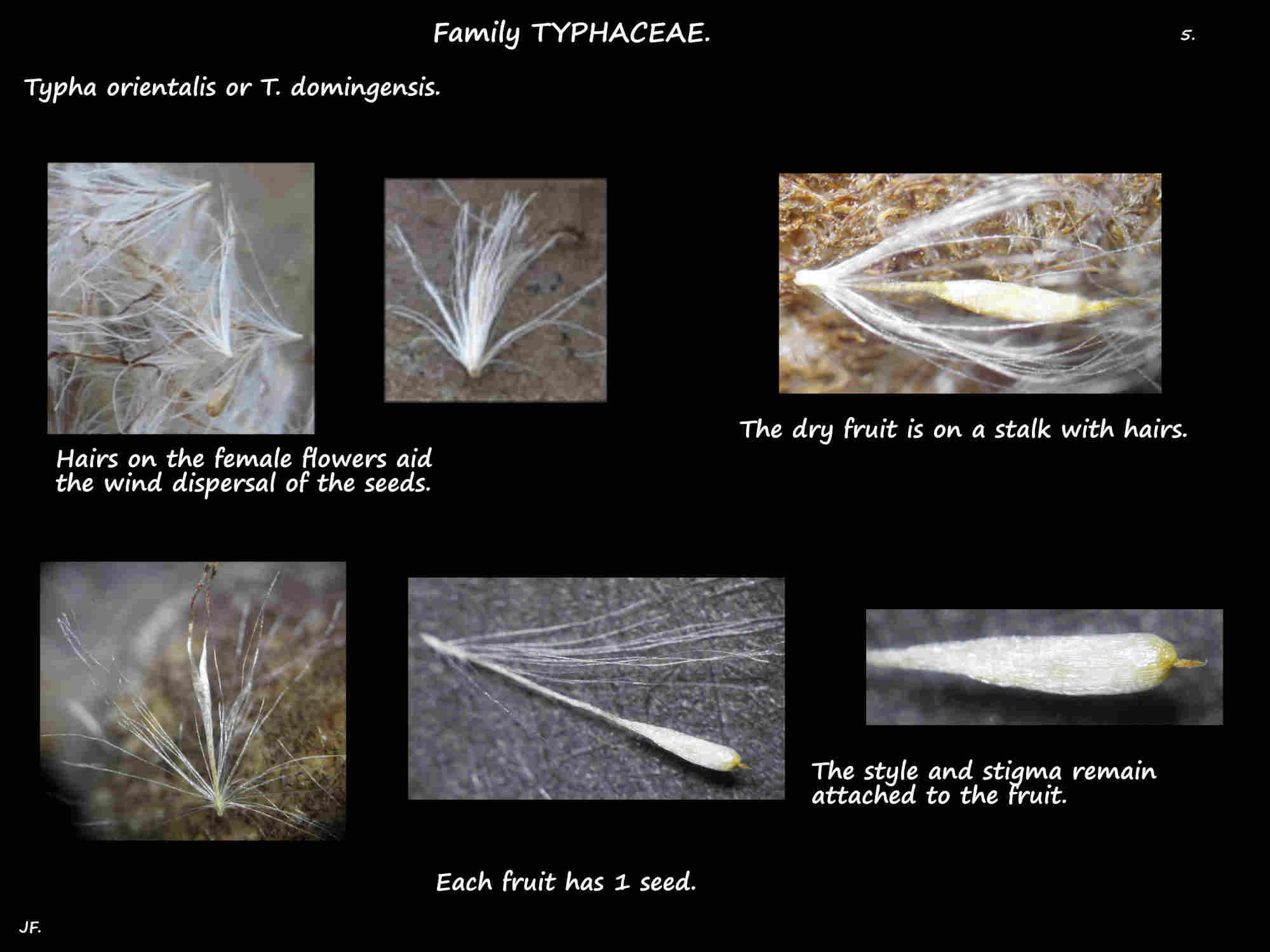Typha.
Known as Cumbingis or Cattails they are sometimes called bulrushes but that term is more
correctly applied to other plants such as the sedges.
Typha are erect, perennial plants 2 to 4 m high that grow in water or marshy conditions.
The upright stems grow from the ends of long branching rhizomes (underground stems).
The mostly basal leaves are alternate and in 2 ranks.
The overlapping bases form an open sheath around the stem.
Leaves are 0.5 to 2 m long and 1 to 3 cm wide.
The blade is flat or semi-circular with a pointed tip and parallel veins.
There may be a small lobe or auricle near the top of the sheath of the top 1 or 2 leaves.
Leaves are green or greyish, yellowish or bluish-green.
The terminal inflorescence is a cylindrical spike of densely packed flowers.
Flowers are unisexual with the males at the top of the spike and the females below.
These 2 areas may be adjacent or have a gap of up to 5 cm between them.
The flowers, under 3 mm long are shades of brown.
The male section can be 3 to 35 cm long and up to 1.5 cm wide.
Male flowers have no sepals or petals but hairs or scales.
There are 3 or more stamens.
After pollen release the flowers fall leaving the upper part of the spike bare.
The lower female section is from 5 to 40 cm long and 1 to 4 cm wide.
Each flower is on a pedicel or stalk with hairs on it and the perianth is replaced by hairs.
The superior ovary is on a stalk that may have hairs on it.
The ovary has 1 ovule and a style with a variously shaped stigma.
There may also be sterile females with a malformed ovary.
The dry achene-like fruit, with the style and stigma still attached open to release the tiny seed.
There are hairs attached to the seed stalk.
All the seeds, released about the same time form a white fluffy mass on the spike.
Seeds are then blown away aided by the hairs.
There are around 12 species with three seen in Australia.
1. Typha latifolia, the introduced Common cattail has a dark or blackish-brown to red flower spike
with a 0 to 5 mm gap between the male and female sections.
2. Typha orientalis the native Broad-leaved cumbungi and
3. Typha domingensis the Narrow-leaved cumbungi are very similar with light or cinnamon brown spikes with a 0 to 5 cm gap.
T. orientalis usually has wider female spikes but microscopic examination of the female flowers (bracts, styles and stigmas)
is needed to be certain of their identification.
J.F.
